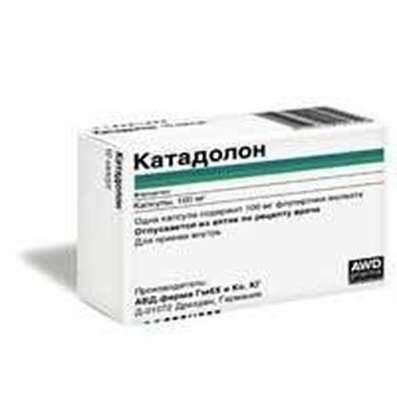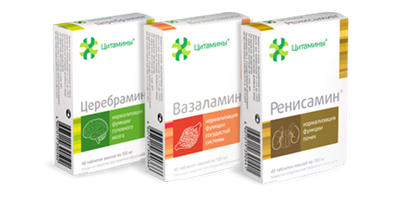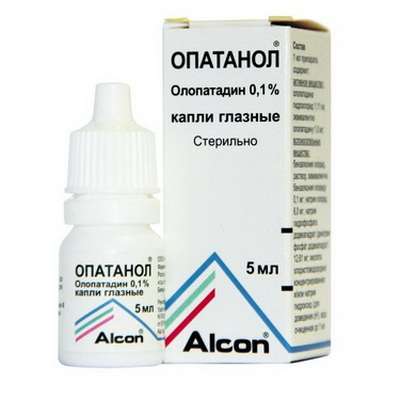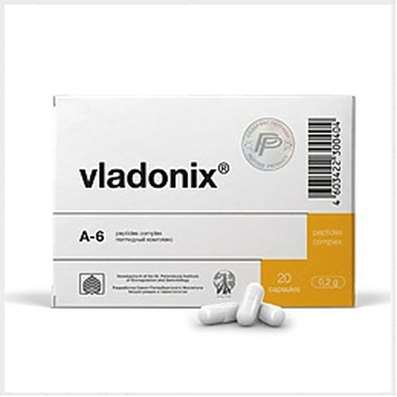Instruction for use: Velafax
I want this, give me price
Dosage form: tablets; capsules
Active substance: Venlafaxine*
ATX
N06AX16 Venlafaxine
Pharmacological groups:
Antidepressant [Antidepressants]
The nosological classification (ICD-10)
F32 Depressive episode: Adynamic subdepression; Astheno-adynamic subdepressive states; Asthenoadressive disorder; Astheno-depressive disorder; Asthenodepressive state; Astheno-depressive state; Major Depressive Disorder; Vyaloapatichesky depression with retardation; Double Depression; Depressive pseudodement; Depressive illness; Depressive mood disorder; Depressive disorder; Depressive mood disorder; Depressive state; Depressive disorders; Depressive syndrome; Depressive syndrome larviated; Depressive syndrome in psychoses; Depressed masks; Depression; Depression Depletion; Depression with the phenomena of inhibition within the framework of cyclothymia; Depression is smiling; Involutional depression; Involutionary melancholy; Involutional depression; Manic-depressive disorder; Masked Depression; Melancholic Attack; Neurotic depression; Neurotic depression; Shallow Depression; Organic depression; Organic depressive syndrome; Simple depression; Simple melancholic syndrome; Psychogenic depression; Reactive depression; Reactive depression with moderate psychopathological symptoms; Reactive depressive states; Reactive depression; Recurrent depression; Seasonal depressive syndrome; Severostatic depression; Senile Depression; Symptomatic Depression; Somatogenic depression; Cyclotymic depression; Exogenous depression; Endogenous depression; Endogenous Depressive Conditions; Endogenous Depression; Endogenous depressive syndrome
F33 Recurrent depressive disorder: Major depressive disorder; Secondary depression; Double Depression; Depressive pseudodement; Depressive mood disorder; Depressive disorder; Depressive mood disorder; Depressive state; Depressive syndrome; Depressed masks; Depression; Depression is smiling; Involutional depression; Involutional depression; Masked Depression; Melancholic Attack; Reactive depression; Reactive depression with moderate psychopathological symptoms; Reactive depressive states; Exogenous depression; Endogenous depression; Endogenous Depressive Conditions; Endogenous Depression; Endogenous depressive syndrome
F41.2 Mixed anxiety and depressive disorder: Depression with anxiety-depressive components; Mixed anxiety-depressive conditions; Anxiety Depression; Anxious and depressing mood; Anxiety-depressive state; Anxious-depressive conditions; Anxiety-depressive syndrome; Anxious-Neurotic Conditions
Composition
Tablets - 1 table.
active substance:
venlafaxine hydrochloride 42.43 mg; 84.86 mg
(equivalent to 37.5 and 75 mg of venlafaxine, respectively)
auxiliary substances: MCC - 64.72 / 129.44 mg; corn starch - 30/60 mg; ferric iron oxide yellow (E172) 0.1 / 0.2 mg; sodium carboxymethyl starch - 22.5 / 45 mg; talc - 1,5 / 3 mg; silicon dioxide colloid - 2,25 / 4,5 mg; magnesium stearate - 1,5 / 3 mg
Description of dosage form
Tablets, 37.5 mg: oblong tablets of light yellow or yellow with a dividing risk on both sides.
Tablets, 75 mg: round tablets of light yellow or yellow with delicate risk - on one side and engraved "PLIVA" - on the other.
Pharmachologic effect
Mode of action - antidepressant.
Pharmacodynamics
Venlafaxine is an antidepressant. According to its chemical structure, it can not be assigned to any known class of antidepressants (tricyclic, tetracyclic or other). It has two active enantiomeric racemic forms.
The antidepressant effect of venlafaxine is associated with an increase in neurotransmitter activity in the CNS. Venlafaxine and its main metabolite O-desmethylvenlafaxine (EFA) are potent inhibitors of the reuptake of serotonin and norepinephrine and poorly inhibit the reuptake of dopamine by neurons. Venlafaxine and EFA equally effectively affect the reuptake of neurotransmitters. Venlafaxine and EFA reduce beta-adrenergic reactions.
Venlafaxine does not have an affinity for muscarinic, cholinergic, histamine H1 and α1-adrenergic receptors in the brain. Venlafaxine does not suppress MAO activity. Has no affinity for opiate, benzodiazepine, phencyclidine or N-methyl-D-aspartate (NMDA) receptors.
Pharmacokinetics
After ingestion, venlafaxine is well absorbed from the digestive tract. After a single dose of 25-150 mg Cmax in blood plasma are achieved within approximately 2.4 hours and are 33-172 ng / ml. After taking the drug during meals, the time to reach Cmax in the blood plasma is increased by 20-30 minutes, but the Cmax and absorption values do not change.
Venlafaxine undergoes intensive metabolism when first passed through the liver. The main metabolite is EFA. Cmax EFA in blood plasma is achieved approximately 4.3 hours after administration and is 61-325 ng / ml. In the range of daily doses of 75-450 mg, the pharmacokinetics of venlafaxine and EFA are linear.
The binding of venlafaxine and EFA to plasma proteins is 27% and 30%, respectively. With repeated administration of Css venlafaxine and EFA are achieved within 3 days.
T1 / 2 venlafaxine and EFA are 5 and 11 hours, respectively. EFA and other metabolites, as well as unchanged venlafaxine, are excreted by the kidneys.
In patients with cirrhosis of the liver, the concentrations in the blood plasma of venlafaxine and EFA are increased, and their elimination rate is reduced. With moderate and severe renal failure (Cl creatinine <30 ml / min), the total clearance of venlafaxine and EFA is reduced, and T1 / 2 is increased.
Age and sex of the patient do not affect the pharmacokinetics of the drug..
Indications for Velaxin
Depression (including in the presence of anxiety), treatment and prevention of relapse.
Contraindications
hypersensitivity to any component of the drug;
simultaneous administration of MAO inhibitors (see also "Interaction");
severe impairment of kidney and / or liver function (glomerular filtration rate (GFR) of less than 10 ml / min, MF more than 18 s);
age to 18 years (safety and efficacy for this age group are not proven);
pregnancy or presumptive pregnancy;
lactation period (there is insufficient data from controlled trials).
With caution: recently transferred myocardial infarction, unstable angina, heart failure, coronary artery disease, ECG changes, incl. prolongation of the QT interval, electrolyte balance disorders, arterial hypertension, tachycardia, history of convulsions, intraocular hypertension, angle-closure glaucoma, manic conditions in the anamnesis, predisposition to bleeding from the skin and mucous membranes, initially reduced body weight.
Application in pregnancy and lactation
The safety of venlafaxine during pregnancy is not proven, so use during pregnancy (or presumptive pregnancy) is possible only if the potential benefit to the mother exceeds the possible risk to the fetus. Women of childbearing age should be warned about this before starting treatment and should immediately seek medical attention in the event of pregnancy or planning pregnancy during drug treatment.
Venlafaxine and EFA are excreted in breast milk. The safety of these substances for newborn babies is not proven, therefore, the use of venlafaxine during breastfeeding is not recommended. If you need to take the drug during lactation, you should decide whether to stop breastfeeding. If the mother's treatment was completed shortly before the birth, a newborn can have withdrawal symptoms.
Side effects
Most of the side effects listed below depend on the dose. With long-term treatment, the severity and frequency of most of these effects is reduced, and there is no need to cancel therapy.
In order of decreasing frequency: often - <1/10 and> 1/100; infrequently - <1/100 and> 1/1000; rarely - <1/1000; very rarely - <1/10000.
Common symptoms: weakness, fatigue, headache, abdominal pain, chills, fever.
From the digestive tract: decreased appetite, constipation, nausea, vomiting, dry mouth; infrequently - bruxism, reversible increase in the activity of liver enzymes; rarely - gastrointestinal bleeding; very rarely - pancreatitis.
From the nervous system: dizziness, insomnia, agitation, drowsiness; often - unusual dreams, anxiety, confused state of consciousness, increased muscle tone, paresthesia, tremor; infrequently - apathy, hallucinations, myoclonus; rarely - ataxia, speech disorders, incl. dysarthria, mania or hypomania (see "Special instructions"), manifestations resembling neuroleptic malignant syndrome, convulsive seizures (see "Special instructions"), serotonergic syndrome; very rarely - delirium, extrapyramidal disorders, incl. dyskinesia and dystonia, tardive dyskinesia, psychomotor agitation / akathisia (see "Special instructions").
From the CVS: arterial hypertension, dilated blood vessels (blood flow), rapid heart rate; infrequently - orthostatic hypotension, fainting, tachycardia; very rarely - an arrhythmia of the type "pirouette", prolongation of the QT interval, ventricular tachycardia, ventricular fibrillation.
From the sense organs: disruption of accommodation, mydriasis, impaired vision, tinnitus; infrequently - a violation of taste sensations.
From the hemopoietic system: infrequently - hemorrhages in the skin (ecchymoses) and mucous membranes; rarely - thrombocytopenia, prolongation of bleeding time; very rarely - agranulocytosis, aplastic anemia, neutropenia, pancytopenia.
On the part of the skin: sweating, itching and rash; infrequently - reactions of photosensitivity, angioedema, maculopapular rashes, urticaria; rarely - alopecia, erythema multiforme, Stevens-Johnson syndrome.
On the part of the genitourinary system: violations of ejaculation, erections, anorgasmia; infrequently - decreased libido, menstrual cycle, menorrhagia, urinary retention; rarely - galactorrhea.
From the side of metabolism: increased serum cholesterol levels, weight loss; infrequently - hyponatremia, the syndrome of insufficient secretion of ADH, violation of laboratory tests of liver function; rarely - hepatitis; very rarely - an increase in the level of prolactin.
Musculoskeletal: arthralgia, myalgia; infrequently - muscle spasm; very rarely - rhabdomyolysis.
The following side effects were observed in children: abdominal pain, chest pain, tachycardia, refusal of food, weight loss, constipation, nausea, ecchymosis, epistaxis, mydriasis, myalgia, dizziness, emotional lability, tremor, hostility and suicidal ideation.
After a severe withdrawal of venlafaxine or a decrease in its dose, fatigue, drowsiness, headache, nausea, vomiting, anorexia, dry mouth, dizziness, diarrhea, insomnia, anxiety, anxiety, disorientation, hypomania, paresthesia, sweating may be observed. These symptoms are usually mild and go untreated. Because of the likelihood of these symptoms, it is very important to gradually reduce the dose of the drug (like any other antidepressant), especially after taking high doses. The length of the period necessary to reduce the dose depends on the size of the dose, the duration of therapy, and the individual sensitivity of the patient.
Interaction
The simultaneous use of MAO inhibitors and venlafaxine is contraindicated. The preparation of VelaxinŽ can be started at least 14 days after the end of therapy with MAO inhibitors. If a reversible MAO inhibitor (moclobemide) was used, this interval may be shorter (24 h). Therapy with MAO inhibitors can begin at least 7 days after the withdrawal of VelaxinŽ.
The simultaneous use of venlafaxine with lithium can increase the level of the latter.
With simultaneous use with imipramine, the pharmacokinetics of venlafaxine and EFA do not change. At the same time, their simultaneous use increases the effects of desipramine - the main metabolite of imipramine - and its other metabolite - 2-OH-imipramine, although the clinical significance of this phenomenon is unknown.
Haloperidol: combined use increases the level of haloperidol in the blood and enhances its effects.
With simultaneous use with diazepam, the pharmacokinetics of drugs and their major metabolites does not change significantly. Also, no effect was found on the psychomotor and psychometric effects of diazepam.
When used simultaneously with clozapine, there may be an increase in its level in the blood plasma and the development of side effects (eg convulsive seizures).
With simultaneous use with risperidone (despite an increase in risperidone AUC), the pharmacokinetics of the sum of active components (risperidone and its active metabolite) does not change significantly.
Reduction of mental and motor activity under the influence of alcohol was not enhanced after taking venlafaxine. Despite this, as in the case of taking other drugs that affect the central nervous system, during the treatment with venlafaxine, the use of alcoholic beverages is not recommended.
On the background of taking venlafaxine, special care should be taken with electroconvulsive therapy. experience with venlafaxine in these conditions is absent.
Drugs metabolized by cytochrome P450 isoenzymes: the enzyme CYP2D6 of the cytochrome P450 system converts venlafaxine to the active metabolite of EFA. Unlike many other antidepressants, the dose of venlafaxine can not be reduced with simultaneous administration with drugs that inhibit CYP2D6 activity or in patients with a genetically determined decrease in CYP2D6 activity, since the total concentration of venlafaxine and EFA will not change at the same time.
The main way to eliminate venlafaxine involves metabolism involving CYP2D6 and CYP3A4; therefore, special care should be taken with the appointment of venlafaxine in combination with drugs that depress both of these enzymes. Such drug interactions have not yet been investigated.
Venlafaxine is a relatively weak inhibitor of CYP2D6 and does not suppress the activity of the isoenzymes CYP1A2, CYP2C9 and CYP3A4; therefore, its interaction with other drugs in the metabolism of which these hepatic enzymes are involved should not be expected.
Cimetidine suppresses the metabolism of the first passage of venlafaxine and does not affect the pharmacokinetics of EFA. In most patients, only a slight increase in the overall pharmacological activity of venlafaxine and EFA is expected (more pronounced in elderly patients and in liver failure).
Clinical studies have not found clinically significant interactions of venlafaxine with antihypertensive (including beta-blockers, ACE inhibitors and diuretics) and antidiabetic drugs.
Drugs associated with blood plasma proteins: binding to plasma proteins is 27% for venlafaxine and 30% for EFA, so drug interactions due to binding to proteins should not be expected.
With simultaneous administration with warfarin, the anticoagulant effect of the latter may be enhanced, while the PV is lengthened and MHO is increased.
With simultaneous admission with indinavir, the pharmacokinetics of indinavir changes (with a 28% reduction in AUC and a 36% decrease in Cmax), and the pharmacokinetics of venlafaxine and EFA do not change. However, the clinical significance of this effect is unknown.
Dosing and Administration
Inside, with food. Each capsule should be swallowed whole and washed down with liquid. Capsules can not be divided, chopped, chewed or placed in water. The daily dose should be taken at one time (in the morning or in the evening), each time at about the same time.
Depression. The recommended initial dose is 75 mg once a day.
If the doctor thinks that a higher dose is required (severe depressive disorder or other conditions requiring hospital treatment), 150 mg once a day can be prescribed immediately. Subsequently, the daily dose can be increased by 75 mg at intervals of 2 weeks or more (but no more than 4 days later), until the desired therapeutic effect is achieved. The maximum daily dose is 350 mg.
After achieving the necessary therapeutic effect, the daily dose can be gradually reduced to a minimum effective level.
Supportive therapy and prevention of relapse. Treatment of depression should last at least 6 months. With stabilizing therapy, as well as therapy for the prevention of recurrence or new episodes of depression, doses that have demonstrated their effectiveness are usually used. The doctor should regularly (at least once every 3 months) monitor the effectiveness of long-term therapy with VelaxinŽ.
Transfer of patients from VelaxinŽ tablets. Patients taking the drug VelaxinŽ in the form of tablets can be transferred to receive the drug in the form of capsules of prolonged action, with the appointment of an equivalent dose 1 time per day. However, an individual dose adjustment may be required.
Renal failure. With mild renal failure (GFR more than 30 ml / min), correction of the dosing regimen is not required. With moderate renal failure (GFR 10-30 ml / min), the dose should be reduced by 50%. In connection with the lengthening of venlafaxine T1 / 2 and EFA, such patients should take the entire dose 1 time per day. It is not recommended to use venlafaxine in severe renal failure (GFR less than 10 ml / min), since there is no reliable data on such therapy. Patients on hemodialysis can receive 50% of the usual daily dose of venlafaxine after completion of hemodialysis.
Liver failure. With mild hepatic insufficiency (MF less than 14 s), correction of the dosing regimen is not required. With moderate hepatic insufficiency (IV 14 to 18 s), the dose should be reduced by 50%. It is not recommended to use venlafaxine in severe hepatic insufficiency, since there are no reliable data on such therapy.
Elderly patients. The old age of the patient does not require a dose change, however, as with the prescription of other medications, caution is required in the treatment of elderly patients, for example, due to the possibility of impaired renal function. The lowest effective dose should be used. When the dose is raised, the patient must be under careful medical supervision.
Children and adolescents (under the age of 18). The safety and efficacy of venlafaxine in children and adolescents under the age of 18 years have not been established.
Withdrawal of VelaxinŽ. As with the treatment with other antidepressants, abrupt withdrawal (especially high doses) of venlafaxine can cause withdrawal symptoms (see "Side effects" and "Special instructions"). Therefore, before the complete cancellation of the drug, a gradual dose reduction is recommended. If high doses were used for more than 6 weeks, it is recommended to reduce doses for at least 2 weeks. The length of the period necessary to reduce the dose depends on the size of the dose, the duration of therapy, and also the patient's reactions.
Overdose
Symptoms: changes in the ECG (prolongation of the QT interval, blockage of the bundle of the bundle, expansion of the QRS complex), sinus or ventricular tachycardia, bradycardia, arterial hypotension, convulsive conditions, depression of consciousness (decrease in wakefulness). In case of an overdose of venlafaxine with simultaneous reception with alcohol and / or other psychotropic drugs, a lethal outcome was reported.
Treatment: symptomatic. Specific antidotes are unknown. It is recommended continuous monitoring of vital functions (breathing and circulation). The purpose of activated charcoal to reduce absorption of the drug. It is not recommended to induce vomiting due to the danger of aspiration. Venlafaxine and EFA are not excreted in dialysis.
Special instructions
With depression, the risk of suicidal thoughts and suicidal attempts increases. This risk persists until a stable remission occurs. Therefore, patients should be under constant medical supervision, and they should only give a small number of capsules of the drug in order to reduce the risk of possible abuse and / or overdose.
VelaxinŽ should not be used in the treatment of children and adolescents under the age of 18 years. An increase in the likelihood of suicidal behavior (suicide attempt and suicidal ideation), as well as hostility in clinical trials, is more common among children and adolescents receiving antidepressants than in groups receiving a placebo.
It was reported of aggressive behavior during the use of venlafaxine (especially at the beginning of the course of treatment and after drug withdrawal).
The use of venlafaxine can cause psychomotor agitation, which clinically resembles akathisia, is characterized by anxiety with the need to move, often in combination with the inability to sit or stand still. This is most often observed during the first few weeks of treatment. If these symptoms occur, an increase in the dose may have an adverse effect, and consideration should be given to whether to continue taking the drug.
Like all antidepressants, venlafaxine should be administered with caution to a patient with mania and / or hypomania in the anamnesis. the drug may cause an increase in their signs. In these cases, medical supervision is necessary.
Care should be taken when treating patients with seizures in the anamnesis. If seizures occur or their frequency increases, treatment with venlafaxine should be discontinued.
Like selective serotonin reuptake inhibitors, venlafaxine should be used with caution when used concomitantly with antipsychotics because may develop symptoms resembling neuroleptic malignant syndrome.
Patients should be warned of the need to consult a doctor immediately if rashes, hives, or other allergic reactions occur.
Some patients with venlafaxine received a dose-dependent increase in blood pressure, which is why regular monitoring of blood pressure is recommended, especially at the beginning of the course of treatment or with increasing doses.
When taking venlafaxine, some cases of orthostatic hypotension are described. Patients, especially the elderly, should be warned about the possibility of dizziness and discomfort.
Venlafaxine can cause an increase in heart rate, especially during high doses. Special care should be taken when prescribing the drug to patients with conditions that may increase with increasing heart rate.
There have not been sufficient studies of the use of venlafaxine in patients who have recently had myocardial infarction or who suffer from decompensated heart failure, so use this medication with these patients with caution.
Like other serotonin reuptake inhibitors, venlafaxine may increase the risk of hemorrhages in the skin and mucous membranes, so caution is necessary in treating patients who are prone to bleeding.
When taking venlafaxine, especially in conditions of dehydration or a decrease in blood volume (including in elderly patients and patients taking diuretics), hyponatremia and / or ADH deficiency syndrome may occur.
During the reception of venlafaxine, cases of mydriasis are noted, so patients with a predisposition to an increase in IOP or who have a risk of angle-closure glaucoma need careful medical supervision.
With renal and hepatic insufficiency, special care is needed. In some cases, a dose reduction is required (see "Method of administration and dose").
Safety and efficacy of venlafaxine with agents that reduce body weight, incl. phentermine, are not established, so their simultaneous use (as well as the use of venlafaxine as a monotherapy to reduce body weight) is not recommended. A clinically significant increase in serum cholesterol was observed in some patients receiving venlafaxine for at least 4 months. Therefore, with prolonged use of the drug, it is advisable to monitor the serum cholesterol level.
After discontinuation of the drug, especially sudden, often symptoms of withdrawal (see "Side effects"). The risk of withdrawal symptoms may depend on several factors, including. the duration of the course and dose, as well as the rate of dose reduction. Symptoms of withdrawal, such as dizziness, sensory disturbances (including paresthesia and a feeling of electric current), sleep disturbances (including insomnia and unusual dreams), agitation or anxiety, nausea and / or vomiting, tremor, sweating , headache, diarrhea, rapid heartbeat and emotional instability, usually have a small or medium severity, but in some patients they can be severe. They are usually observed in the first days after the drug was discontinued, although there were isolated reports of the occurrence of such symptoms in patients who accidentally missed a single dose. Usually these phenomena pass independently for 2 weeks; however, in some patients they may be longer (2-3 months or more). Therefore, before cancellation of venlafaxine, it is recommended to gradually reduce its dose for several weeks or months, depending on the patient's condition (see "Method of administration and dose").
Influence on the ability to drive vehicles and work with machinery. It should be borne in mind that any drug therapy with psychoactive drugs can reduce the ability to make judgments, thinking or performing motor functions. This should be warned by the patient before starting treatment. If such effects occur, the extent and duration of the restrictions should be determined by the physician.
Release form
Tablets, 37.5 mg and 75 mg. According to Table 14. in a blister of PVC film and aluminum foil. For 2 or 4 blisters in a cardboard box.
Conditions of leave from pharmacies
On prescription.
Storage conditions for Velafax
At a temperature of no higher than 25 ° C.
Keep out of the reach of children.
Shelf life of Velafax
3 years.
Do not use after the expiry date printed on the package.

 Cart
Cart





